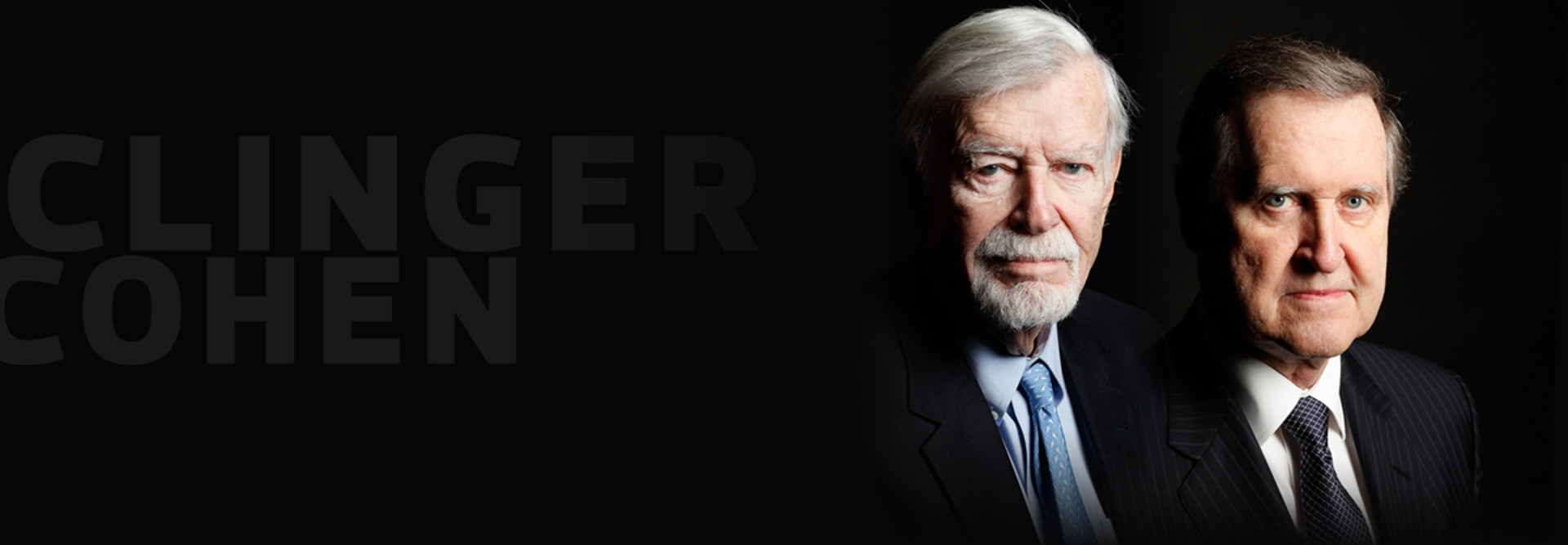How the Clinger-Cohen Act Continues to Ripple Through Federal IT Today
The modern era of federal IT can be traced to one landmark event: the signing of the Clinger-Cohen Act on Feb. 10, 1996.
Although they did not know it at the time, the vision then-congressmen William Clinger and William Cohen set forth would guide government technology for more than two decades and lay the groundwork for innovation that continues today.
“The Clinger-Cohen Act recognized that IT can enable change,” says Vance Hitch, a senior adviser for Deloitte who served as the Justice Department CIO for nine years. “The act set a foundation for what CIOs were supposed to do.”
In recent years, many technology initiatives from the Office of Management and Budget — cloud-first, shared services and data center consolidation — can trace their roots to the vision set forth by the Clinger-Cohen Act.
“I am always pleased when people hear my name and say, ‘We use the Clinger-Cohen Act all the time. It’s vital to us,’” says Clinger, now a senior fellow at the Johns Hopkins University Center for Advanced Governmental Studies.
“The overall benefits of the Clinger-Cohen Act have been considerable, impactful, and they continue to evolve,” says Cohen, CEO of the Cohen Group, the business consulting firm he founded in Washington, D.C., in 2001.
The federal government’s estimated information technology budget for fiscal year 2016
SOURCE: Office of Management and Budget
Pushing to Reform Federal IT
Prior to the act’s passage, it typically took the federal government years to purchase something as simple as a notebook computer or commercial software. The General Services Administration managed all technology purchases with little thought to the strategic possibilities of agency IT.
As a result, government rapidly fell behind advances in technology, running on hardware and software several generations behind.
In 1995, Cohen, then a senator from Maine, drafted the Information Technology Management Reform Act (ITMRA), which later informed the IT provisions of the Clinger-Cohen Act. Elements included a 5 percent reduction in IT spending each year along with a corresponding annual 5 percent increase in efficiency during the five-year period following the bill’s passage.
“I wanted to link IT spending directly to producing measurable mission-related outcomes,” he says.
At the same time, Clinger — the former representative from Northwestern Pennsylvania’s Fifth District — sought to reduce excessive and unnecessary spending in government as a whole. He authored the Federal Acquisition Reform Act (FARA), which streamlined procurement.
“Over the years, the federal government’s procurement practices became encrusted with all kinds of barnacles,” Clinger says. “We realized that many of our contracts featured fewer businesses bidding, which meant less competition.” Upon learning about each other’s bill, the two worked together on a combined piece of legislation later renamed the Clinger-Cohen Act.
Two Decades of Transformation
The bill transferred the management of federal IT from the General Services Administration to OMB. More important, it treated technology spending as an investment, requiring a true business case for its purchase. It also established the position of the agency CIO, set capital planning and investment control processes and mandated the inclusion of security as part of any strategic IT plan.
After Clinger-Cohen passed, agencies were empowered to develop their own architectures and make their own technology investment decisions,” Cohen said.
“In 20 years, the CIO evolved from a back-office person who ran IT to a business partner, a strategist who can enable the mission and be a change agent,” Hitch says.
While some observers have questioned how well each agency has implemented the legislation, its overall significance is not up for debate. Since its passage into law, it has served as the blueprint for government IT and remains relevant today.
FITARA Finishes the Job
Despite the major IT reforms introduced through the act, it hasn’t transformed government IT as fully as its authors intended.
A 2011 report by the Government Accountability Office found that only 17 out of 30 government CIOs reported to their agency’s top administrator, even though the act requires it.
The report also found that while the law gives broad authority to agency CIOs, in practice many hold limited authority over IT budgets. The problem, Hitch says, lies in the fact that agencies have implemented the law in the ways they felt most appropriate for their culture.
Clinger says he is happy that the act has made a positive impact, but disappointed that it was not fully adopted as written.
To remedy that, Congress passed the Federal IT Acquisition Reform Act (FITARA) in 2014, which aims to fully realize many of the remaining goals of the Clinger-Cohen Act.
A Long-Lasting Legacy
Overall, both Clinger and Cohen say they are proud of the legislation that bears their names.
When Cohen reflects on the past 20 years since the law was enacted and the vast improvements that have resulted, he’s pleasantly surprised that he and Clinger largely got it right.
“I don’t think we’re quite where I imagined, but the movement is positive, and it’s clear the framework can continue to drive the government toward 21st century possibilities,” Cohen says.









